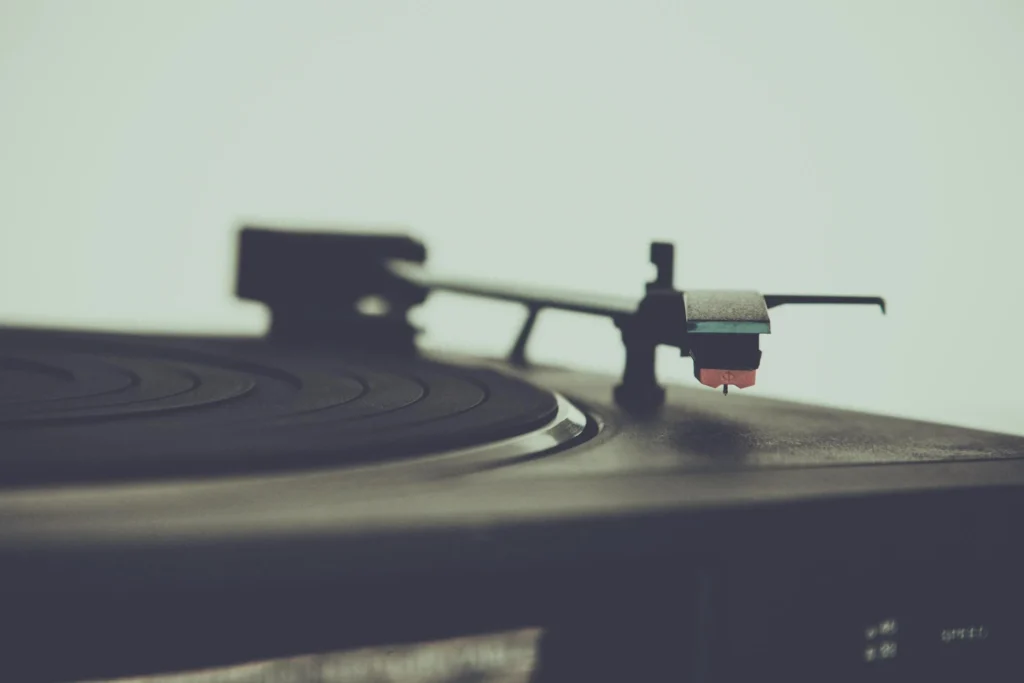This will be a quick one, because it is a simple ask:
You should own everything on your Spotify Wrapped playlist.
Own. As in: physical or digital copies you can play anywhere, offline, far from the grips of Spotify.
Or Apple. Or Tidal. Or whatever subscription platform of your choosing. Over the year these artists have filled your head with their sonic delights. Without them, you’d be listening to nothing. Or, worse yet, THE RADIO.

Sharing your little slideshow of Spotify graphics is great. Tagging the artists social accounts is also great. But it’s all for naught if you aren’t paying for that music. With cash money. Period. Chances are, if an artist is on Spotify, they’re also on Bandcamp. Buy from there. Keep an eye out for deals. Every so often Bandcamp will do days where 100% of the sales goes directly to the artist (forgoing their cut, which is significant).
Of course, you can still stream your favorite artists on Spotify. Frankly, it’s still the easiest way to access what I want to hear while I’m on the go. I have an old 80 GB iPod that is locked out of my apple account (I hate Apple so so so much) and with proliferation of smartphone tech, no one seems to be doing much in the way of standalone MP3 players. So yes, keep streaming on Spotify, I’m sure your favorite artists will appreciate the fractions of a penny. Plus, the ease of discovery only expands my taste. I love finding a good public playlist that turns my world upside down.
Point being: recording music isn’t easy. Making a *great* recording is difficult. There will always be a place for the roughshod songs that are recorded in a bedroom with Garageband on a circa 2011 laptop. Studio time, engineering, mastering, etc. is expensive as hell. It is cheaper than it used to be, but it is still out of reach for those making music as a “side hobby.” This is why producers and labels got into the mix — they would foot the bill for the recording and then recover their investment from the record sales.
For a brief moment, I was an underpaid do-everything for a record label. One record cost about $30K to put to tape. About 12 songs. The label also forked out for 5,000 CD copies of the album and untold amounts to market the thing. This was over a decade ago, the band has long since gone on hiatus (or broke up? I haven’t kept after them). I couldn’t tell you what closet or warehouse those CDs are in, but the album still exists on Spotify.
I had this job at that very, very strange time when the music industry was still trying to figure itself out. The Napster/ Limewire days cratered the industry. Everyone who was into music was now into free music. Between P2P sharing and Pandora, music discovery was through the roof. Music collections exploded from the solid 20 albums you had on rotation to dozens, if not hundreds, more artists from all over the bandwidth. Just ask anyone with a second-hand Honda Civic in the late 90s/ early 2000s — their backseat was home to a suitcase-sized CaseLogic that was mostly burned CDs with the playlist written on the front in Sharpie.
iTunes was starting to charge .99 for a song. Then, 1.29 for a higher quality edition of the same song. People bought because it was easy. A small band trying to promote itself at this time was limited — the free weeklies, a few blogs with some clout, and you’d play the same dozen bars around town every month or so. Touring was expensive. Connecting with the right promoters was tough. Everything was possible, sure, but when you would tour halfway across the country and only sell 30 copies of your record — what gives?
$30K paid for the physical recording. But that’s not counting the years of writing that went into it. Every song you hear is someone’s effort, it is someone’s art. When you buy an album, you’re buying a work of art.
Physical media is on the return. Bands are putting out CDs and *cassette tapes* of their recordings. Jack White is calling out the major record companies on not investing in their artist’s (and their fans) desire to produce and sell vinyl albums. The appetite is there, but the usual goings on of our capitalist hellscape is holding everything in the balance.
How To Be A Good Music Fan (even if you aren’t a fan of good music).
If you find yourself playing the same artists/ playlists/ albums on a streaming service, just buy the damn thing. You obviously love it.
Get it on pre-order. The next album of the band you follow, get the thing they announce as soon as you can. Most will sweeten the deal with some kind of special edition pressing, bonus tracks, early listening, a free hat, whatever. And, this is the hard part, buy it even if you’re not sure you like it. The success of this album depends on whether or not they make the next one — and the next one could be the one that saves your life or gets you laid. You never know.
Avoid the scalper. In general, I avoid the kind of shows that are in the kind of demand that attract scalpers and ticketmasterbaters. But, when you can, be cautious that you’re buying in a way where the artist will get their fair cut. Second market is a brutal beast, and the markups show how much of an asshole some people can be. When in doubt, wait until the last minute. If the show isn’t sold out they’ll drop their prices. Hell, there might be someone outside the theater trying to give the damn thing away.
Show Up for the Opener. Most live shows will have one or two opening acts before the headliner. Opening bands are there to warm up a room and give audiences something to listen to while they run up bar tabs. Venues love openers. You should love them, too. They’re thrilled to be there. Show up for the opener even if you’ve never heard anything about them. I guarantee you, the next Taylor Swift or Noah Kahn is opening for a regionally-touring punk band somewhere tonight. If you want to be the person who says “I saw them play their first show,” you gotta show up to their first show.
Applause is great, cash is better. Have I mentioned paying an artist for their work yet? Well, here it is again. If a musician is on tour, they want your money. Yes, of course, they love playing music and are thrilled you bought tickets and showed up. They love that you know all the lyrics to all their songs. But they’ll love you more if you bought a shirt and a copy of the record you already own. Buy it on vinyl and get them to autograph the sleeve.
Build the Playlist. We used to share cassette tapes mixed on dual-deck tape players. There was an art to it. Today, there is the public playlist. On Spotify, on YouTube, on wherever everywhere. Share what you’re into. Go into the deeper cuts and the b-sides. Build the collection and share it somewhere I can see it.
(and Zoe’s take — which is closer to the book)
Updated Section: You Should Own More of What You Love
In our post-capitalist hellscape, just remember that most of the media you consume on a regular basis is on lease. You don’t own a single thing you hear on Spotify – you lease it for a monthly fee. Same goes for any streaming service. If you can’t hold it in your hand or move it to a new device, you don’t own it. And if you don’t own it, it might just disappear tomorrow.
I’ll need to write more about digital rights management (DRM) at some point, but it is far more complicated than anyone can imagine. But just know: there are libraries of movies, books, and records that are in vaults, away from the public eye, which are sitting and rotting purely because there isn’t a viable profit margin on them. Or, there might be some kind of spite tied to it. Consider the fact that Kevin Smith’s Dogma has been under Miramax lock and key for decades – you haven’t been able to buy or stream this movie anywhere unless you bought it before 2005-ish.
Own the stuff you love. Decentralize your existence. There’s nothing stopping someone from cutting your lifeline tomorrow.


